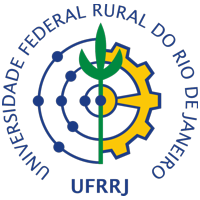Influence of altitude on the life story of Phyllostomidae bats (Chiroptera, Mammalia) in the Atlantic Forest
Em áreas montanhosas localizam-se muitos hotspots mundiais para conservação, sendo que esses locais são considerados áreas prioritárias para preservação de espécies de plantas e vertebrados. Espécies que ocorrem nesses locais possuem traços funcionais que propiciam a colonização de florestas em áreas elevadas. Além disso, pouco é conhecido sobre a biologia dessas espécies em gradientes altitudinais, como por exemplo sua taxa reprodutiva. Sendo assim, os objetivos da presente tese foram divididos em dois capítulos, sendo eles: (1) verificar como as espécies e as diferentes guildas de Phyllostomidae variam ao longo de um gradiente altitudinal e identificar que traços funcionais facilitam a colonização de florestas em áreas elevadas e (2) determinar se a taxa reprodutiva de morcegos Phyllostomidae frugívoros varia localmente e se esta variação pode ser explicada pelas respostas locais à variação na abundância de recursos. Para isto, compilamos estudos realizados na Floresta Atlântica do sul e sudeste do Brasil através de banco de dados (banco de teses da CAPES; Scielo; Web of Science), revistas especializadas, e do banco de dados do Laboratório de Diversidade de Morcegos (LADIM) do Instituto de Biologia da Universidade Federal Rural do Rio de Janeiro (UFRRJ). Após a seleção de 35 diferentes espécies de morcegos Phyllostomidae de 45 diferentes localidades, onde a altitude variou entre 60 e 2.450 m de altitude, selecionamos 10 traços funcionais para cada espécie: guilda trófica (GT), nível trófico (NT), carga relativa da asa (CRA), aspecto da asa (AA), grau de exigência de habitat florestal (GEHF), utilização de cavidades naturais (UCN), limite latitudinal sul (LLS), massa corporal (MC), tamanho do antebraço (TA) e tamanho corporal (TC). Os traços funcionais selecionados foram relacionados com um índice altitudinal, representando a altitude em que a espécie é mais abundante, e aqueles traços funcionais que apresentaram maior correlação foram submetidos a escolha de melhor modelo para descrever quais foram os principais traços funcionais que levam as espécies a colonizarem florestas em áreas elevadas. Além disso, consideramos as espécies com mais de 300 capturas (Carollia perspicillata, Sturnira lilium e Artibeus spp.) para verificar o efeito da altitude sobre sua taxa reprodutiva, relacionando a proporção de animais em reprodução com a altitude. Encontramos uma queda na abundância e riqueza de espécies de Phyllostomidae em altitudes elevadas, com queda na abundância de frugívoros e aumento de espécies de hábitos hematófagos. As guildas de nectarívoros, catadores e onívoros não foram influenciadas pela altitude. Nossos resultados também indicaram que o grau de exigência de habitat florestal foi o principal traço funcional que leva as espécies a colonizarem florestas em áreas elevadas, sendo que a utilização de cavidades naturais e o limite latitudinal sul também podem ser relevantes para a colonização. Todas as espécies de morcegos apresentaram maior taxa reprodutiva nos meses em que historicamente ocorrem maiores precipitações (de outubro a março). Sturnira lilium foi a espécie que apresentou maior taxa reprodutiva em altitudes elevadas, sendo esta taxa coincidente com a área onde há maior riqueza e abundância de Solanum sp. Artibeus sp. apresentou maior taxa reprodutiva em médias e baixas altitudes, locais onde há maior riqueza de espécies de Ficus e Carollia perspicillata não apresentou preferência altitudinal para a reprodução. Naquelas localidades onde a abundância de morcegos foi maior, mais fêmeas estavam reproduzindo-se, sendo que estes locais parecem ter maiores quantidades de recursos. Mostra-se necessário a conservação de todo o gradiente altitudinal com a possível implantação de unidades de conservação, pois determinadas espécies de morcegos ocorrem em maior abundância em altitudes diferentes, além de se reproduzirem em altitudes diferentes
Many world hotspots for conservation are located in mountains, which are considered priority areas for preservation of plants and vertebrates species. Species that occur in these locations have functional traits that favor the colonization of forests in high areas. Furthermore, we know little about the biology of these species along elevational gradients, for example, reproductive rate. Thus, the objectives of this thesis were divided into two sections, namely: (1) verify how the species and the different Phyllostomidae guilds vary in richness along an altitudinal gradient and identify the functional traits that facilitate the colonization of forests in high areas, and (2) determine if the reproductive rate of fruit bats Phyllostomidae varies locally and if this variation can be explained by local responses to variations in the abundance of resources. For this, we compiled studies in the Atlantic Forest of southern and southeastern Brazil through database (Capes bank of thesis; Scielo; Web of Science), journals and the database of Laboratório de Diversidade de Morcegos (LADIM) of Instituto de Biologia of Universidade Federal Rural do Rio de Janeiro (UFRRJ). After the selection of 35 different species of Phyllostomidae bats of 45 different locations, where the altitude varies between 60 and 2.450 m.a.s.l., 10 functional traits for each species were selected: trophic guild (GT), trophic level (NT), relative wing load (CRA), aspect ratio (AA), degree requirement forest habitat (GEHF), using natural cavities (UCN), southern latitudinal limit (LLS), body mass (MC), forearm size (TA) and body size (TC). The selected functional traits were related to an altitudinal index, calculated for each species, and those with greater correlation were chosen to be the best model to describe and determine the main functional traits that lead the species to colonize forests in high areas. Furthermore, we considered species with over 300 captures (Carollia perspicillata, Sturnira lilium e Artibeus spp.) to verify the effect of altitude on their reproductive rate. We found that there was a decline in the abundance and richness of Phyllostomidae species in high altitudes, with a decline in the abundance of fruit bats and increase of hematophagous species. The nectarivorous bats, gleaners and omnivore bats were not affected by altitude. The results also indicated that the forest habitat requirements degree was the main functional trait that leads the species to colonize forests in high areas, and the use of natural cavities and southern latitudinal limit could be relevant to colonize. All bat species had a higher reproductive rate in months of major rainfall (October to March). Sturnira lilium was the species that has the highest reproductive rate in high altitudes, which coincides with the area where there is a greater wealth and abundance of Solanum sp. Artibeus sp. had a higher reproductive rate in medium and low altitudes, where there is a greater richness of Ficus species and Carollia perspicillata showed no altitudinal preference for reproduction. At the areas with larger bat abundance, more reproducing females were observed, as these sites appear to have a higher amount of resources. The conservation of the whole altitudinal gradient with the possible implementation of conservation units is necessary, because bat species occur in greater abundance at different altitudes and reproduce at different altitudes.
Carvalho, William Douglas de Carvalho. Influência da altitude na história de vida de morcegos Phyllostomidae (Chiroptera, Mammalia) na Floresta Atlântica. 2015. [76 f.]. Tese( PROGRAMA DE PÓS-GRADUAÇÃO EM BIOLOGIA ANIMAL) – Universidade Federal Rural do Rio de Janeiro, [Seropédica-RJ] .

